
VIMS' Center for Coastal Resources Management is helping efforts to establish a Middle Peninsula chapter of the Virginia Master Naturalist program

VIMS' Center for Coastal Resources Management is helping efforts to establish a Middle Peninsula chapter of the Virginia Master Naturalist program

A private gift to VIMS funds summer camps that provide fun, hands-on experiences in the field and lab to elementary and middle school students from in and around Gloucester County.

VIMS' 50-year monitoring program shows that Chesapeake Bay oysters are developing resistance to the diseases that have helped devastate their population.
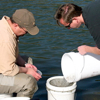
The American Eel Survey at VIMS monitors the migration of juvenile eels to provide the first consistent picture of the eels' coastwide population.
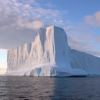
VIMS research helps better understand, conserve, and manage the polar ecosystem—and to shed light on Virginia's climate-change future.
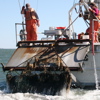
Data from the Winter Blue Crab Dredge Survey are an indispensable tool for restoring the Bay’s blue crab fishery.
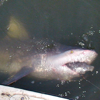
The world's longest-running study of shark populations has focused global attention on shark declines and led to the first U.S. management plan for sharks.
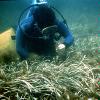
The SAV program at VIMS maps underwater grasses throughout Chesapeake Bay and restores grasses to healthy areas.
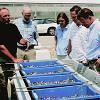
The traditional means of harvesting Bay oysters is now undergoing a sea-change, as VIMS helps industry add the techniques of aquaculture to its repertoire.

VIMS' Center for Coastal Resources Management is helping efforts to establish a Middle Peninsula chapter of the Virginia Master Naturalist program

A private gift to VIMS funds summer camps that provide fun, hands-on experiences in the field and lab to elementary and middle school students from in and around Gloucester County.

VIMS' 50-year monitoring program shows that Chesapeake Bay oysters are developing resistance to the diseases that have helped devastate their population.

The American Eel Survey at VIMS monitors the migration of juvenile eels to provide the first consistent picture of the eels' coastwide population.

VIMS research helps better understand, conserve, and manage the polar ecosystem—and to shed light on Virginia's climate-change future.

Data from the Winter Blue Crab Dredge Survey are an indispensable tool for restoring the Bay’s blue crab fishery.

The world's longest-running study of shark populations has focused global attention on shark declines and led to the first U.S. management plan for sharks.

The SAV program at VIMS maps underwater grasses throughout Chesapeake Bay and restores grasses to healthy areas.
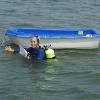
Each summer, a group of bright young scientists gather at VIMS to conduct a 10-week research project as part of the NSF-funded Research Experience for Undergraduates program.

VIMS' Center for Coastal Resources Management is helping efforts to establish a Middle Peninsula chapter of the Virginia Master Naturalist program

A private gift to VIMS funds summer camps that provide fun, hands-on experiences in the field and lab to elementary and middle school students from in and around Gloucester County.

VIMS' 50-year monitoring program shows that Chesapeake Bay oysters are developing resistance to the diseases that have helped devastate their population.

The American Eel Survey at VIMS monitors the migration of juvenile eels to provide the first consistent picture of the eels' coastwide population.

VIMS research helps better understand, conserve, and manage the polar ecosystem—and to shed light on Virginia's climate-change future.

Data from the Winter Blue Crab Dredge Survey are an indispensable tool for restoring the Bay’s blue crab fishery.

The world's longest-running study of shark populations has focused global attention on shark declines and led to the first U.S. management plan for sharks.

The SAV program at VIMS maps underwater grasses throughout Chesapeake Bay and restores grasses to healthy areas.